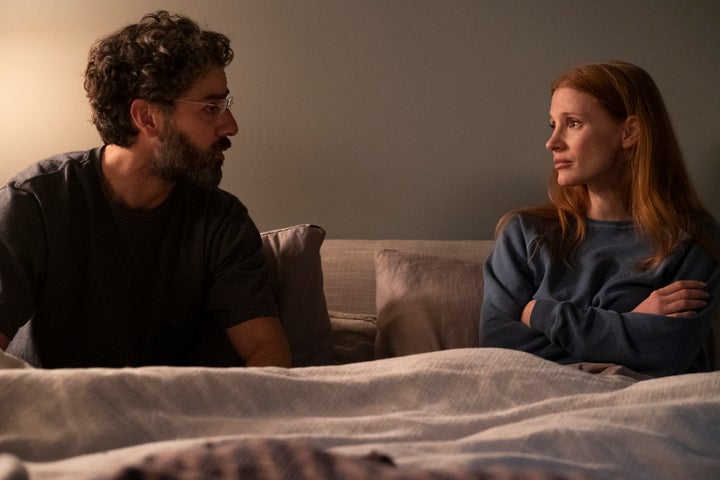As more states pass restrictive abortion laws and the conservative majority on the Supreme Court is actively trying to dismantle Roe v. Wade, abortion storylines on TV have not adequately depicted the barriers in accessing abortion, according to a new report.
“What really got to me about this year — and over the past couple of years, really — is we’ve seen this mounting number, this incredible increase in abortion restrictions that we’ve never seen before, in real life. And that’s just not translating to the lives of characters on TV. They’re just totally divorced from the reality of abortion access,” said Steph Herold, a researcher at Advancing New Standards in Reproductive Health at the University of California, San Francisco, and one of the authors of the report.
Herold and her colleagues have been tracking abortion storylines in pop culture for about a decade. The good news is they have found a marked increase in the number of TV shows that have incorporated an abortion-related storyline, which can reduce the stigma against talking about abortions and illuminate the issue for viewers. In 2016, they found just 13 abortion-related plotlines on major scripted shows in the U.S., involving characters either having an abortion, disclosing a past abortion or considering getting an abortion. In 2021, there were at least 47 abortion-related plotlines on 42 shows.
But the bad news is a lot of those storylines remain limited. They often do not reflect the barriers to access that many people, such as low-income people, people of color and trans people, experience. And they don’t reflect our current political situation.
Most abortion patients “face at least one logistical or financial obstacle when obtaining an abortion,” the report states. But most TV shows do not depict this at all, showing a character easily locating an abortion provider, paying for the abortion, taking time off from work, having insurance coverage or living in an area with relatively few abortion restrictions, like New York or Los Angeles.
This goes hand in hand with the demographic disconnect between TV and reality. The majority of abortion patients are people of color, and many are low-income people, who tend to face increased barriers to abortion access. But the vast majority of TV characters in abortion-related storylines are white and wealthy.
According to the report, 68% of TV characters in abortion-related storylines in 2021 were white. Only two shows featured Black women in these storylines: ABC’s “The Good Doctor” and HBO Max’s “Love Life.” More shows this year did feature Latina and Asian characters in abortion-related storylines. However, “all but one of these characters were on television shows that originated outside the United States, and thus did not represent the racialized experience of accessing an abortion in the U.S.,” the report said.

Even though the frequency of abortion storylines has increased over the past several years, none of these trends have really changed, presenting many missed opportunities for TV creators and writers, Herold said.
One development she finds encouraging is how several TV shows in 2021 contained nuanced storylines about supportive partners, family members and friends accompanying a character to the abortion or supporting them as they made their decision or talked about a previous abortion.
“We saw a friend sitting next to the person having the abortion, on the couch comforting them, making them soup. All of that are just really important pieces to have in the cultural conversation about abortion,” Herold said. “It’s not just a hot-button political issue, but a time when you can show up and be there for your friends, regardless of your politics.”
But once again, the vast majority of those storylines involved white characters, when in reality, stories showing how to support someone having an abortion or talking about one can be instructive for everyone. (Among the very few exceptions was “Love Life,” starring William Jackson Harper and Jessica Williams.)
Herold also hopes more TV writers will explore responsible plotlines involving medication abortion. It’s a safe alternative to finding a provider or going to a clinic, which is becoming increasingly difficult in many parts of the country. (A handful of shows in 2021 did responsibly show a character safely getting a medication abortion, such as ABC’s “A Million Little Things” and HBO’s “Scenes From a Marriage,” according to the report.)
“Given where we are in this crisis moment of abortion legality, I’m really interested in seeing more representations of safe, self-managed abortion on TV,” Herold said. “I’m hoping in the future, we’ll be able to see one or more characters order pills online, go through a telehealth experience with a clinician, and then have her safe abortion that way, so people can begin to understand if abortion does become illegal or effectively illegal that there are safe ways. It’s not a coat hanger. It’s an FDA-approved set of pills that you can take.”

Showing barriers to access and our dire political reality is one important area. But as Herold said, so is showing relatable, human stories about everyday people and “just opening the door so it’s not just these same recycled stories that we’ve seen before over the last couple of years.”
Like so many forms of representation on screen, there’s value in TV shows accurately, responsibly and compassionately telling more stories about abortion.
“A lot of people don’t know that they know and love someone who has had an abortion. One of the ways that they’re exposed to it is through what’s happening in politics, and then what’s happening on their TVs and their TV shows,” Herold said. “If one of the primary ways that they see someone that they care about — even if it’s in this parasocial way where it’s a character on TV — the way that that’s depicted matters. It can show them what it’s like to get an abortion, if abortion is safe or not, how people react to that character getting an abortion, what they have to do to get the abortion, how they make that decision, how it affects their life going forward.”
“And if they see that only once on a show, it can have these unintended consequences implying abortion is not normal or not safe and not common — when in reality we know the opposite is true, right? Abortion is very normal, so common, one of the safest medical procedures.”
Read the full report, “Abortion Onscreen in 2021,” here.

